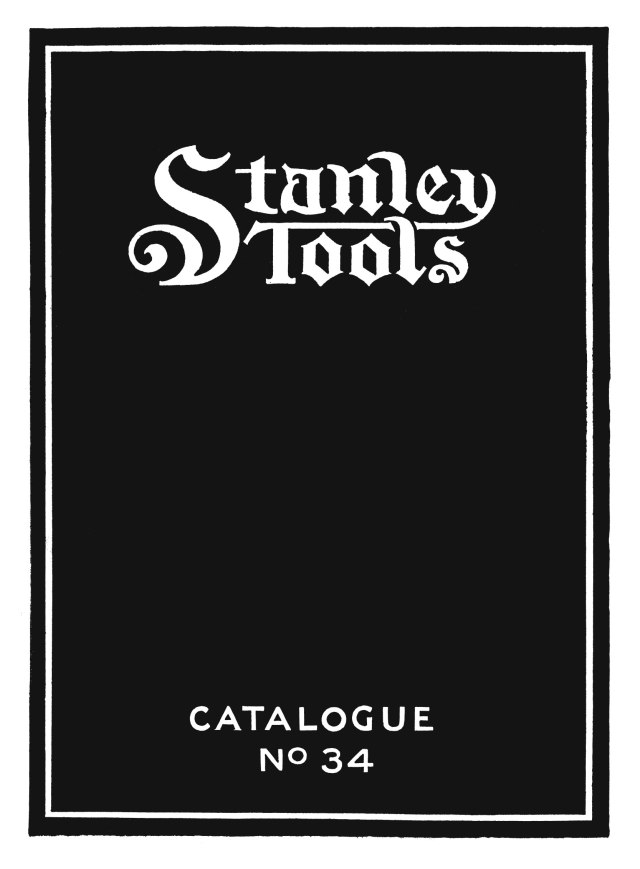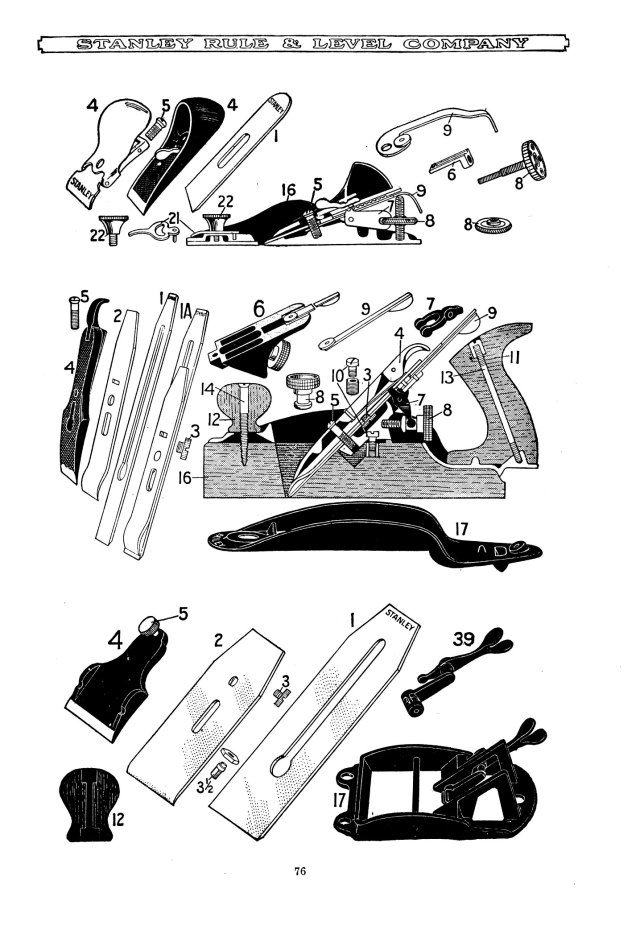
Every now and then, we like to release a book without a long preamble. Something beautiful, useful and inexpensive.
Today we are accepting pre-publication orders for a reprint of the Stanley Tools No. 34 Catalogue, a project that has been a technical challenge for the last few months. It is $25, which includes shipping in the United States and Canada. It is available for ordering in our store. It will ship out in mid-September (it also will be offered for sale at Woodworking in America).
You can place your pre-publication order here. Orders received before Sept. 15 will also receive a free high-resolution scan of the catalog in pdf format.
This 1914 catalog shows nearly every tool needed in a hand-tool shop, from the chisels to the butt gauges to every sort of plane in the company’s line. The catalog’s text explains what each one is used for and how it functions differently from other similar tools.

The catalog also has fantastic exploded views of many of the complex tools, such as the company’s miter boxes, the multi-planes and handplanes.
When I was a beginning woodworker, I often read through catalogs such as this before I headed out to the local antique markets so I could identify what I was seeing and know if it was something useful (do I need a clapboard gauge, a wantage rod or a board stick?). Thanks to vintage catalogs I also could easily figure out when tools that I spotted for sale had parts that were missing. And I even learned how to adjust my grandfather’s level with the help of the old catalogs.. While there are some poor-quality scans available of early catalogs on the Internet, we wanted to do better than that. For a long time, we have sought to publish a crisp and classy catalog from the heyday of Stanley Tools’ production of woodworking tools. So we collected a bunch of catalogs and finally settled on one produced in 1914 – one of our favorite eras of Stanley’s output.
While there are some poor-quality scans available of early catalogs on the Internet, we wanted to do better than that. For a long time, we have sought to publish a crisp and classy catalog from the heyday of Stanley Tools’ production of woodworking tools. So we collected a bunch of catalogs and finally settled on one produced in 1914 – one of our favorite eras of Stanley’s output.
This catalog contains all the planes, hand drills, measuring tools, chisels and hundreds more that are critical to a furniture shop, but without a lot of the oddball stuff that came later.
After selecting the catalog we liked the best, the next challenge was printing it. We wanted to capture and reproduce the crisp drawings from the 1914 original and produce it on the smooth and hard paper that was common at the time.
Without getting too geeky, we worked with our pre-press people to figure out a way to scan and print this catalog so it looked identical to the original. We had to develop a new scanning and image-processing routine to make the scans. Then we made a sample catalog using the scans on a modern offset press. We crossed our fingers. Many reproduction catalogs look muddy and display “moire” because of the screens used in the day.
Our pre-press manager came back with this happy news: “It looks clean enough to eat off of.”
We are pleased to offer this 144-page catalog, which looks and feels like the 1914 original. The only “improvements” we made to the vintage catalog is that we spent the extra money to sew and glue the signatures for extra durability. And we used acid-free paper to prevent the pages from yellowing over time.
If you are just getting into hand tools, we think you will find this catalog a delight to read, hold and learn from. The information in it is factual and straightforward – not the puffery you get from many modern catalogs. And if you collect or appreciate vintage hand tools, we think you love this catalog, which reproduces the vintage drawings with remarkable clarity.
Like all Lost Art Press books, this is produced entirely in the United States using domestic materials. Softcover. 144 pages. Color cover with black & white interior.
— Christopher Schwarz